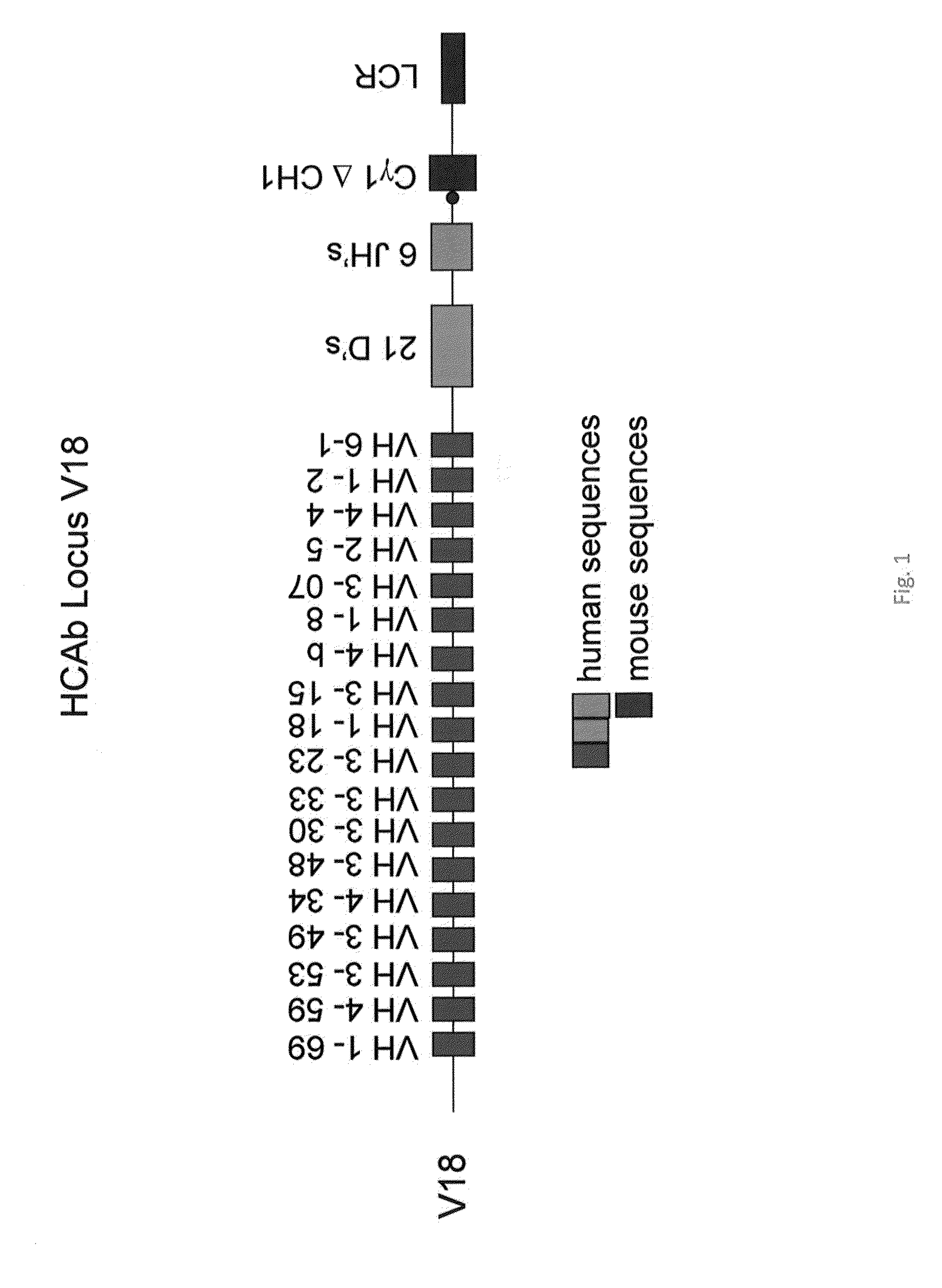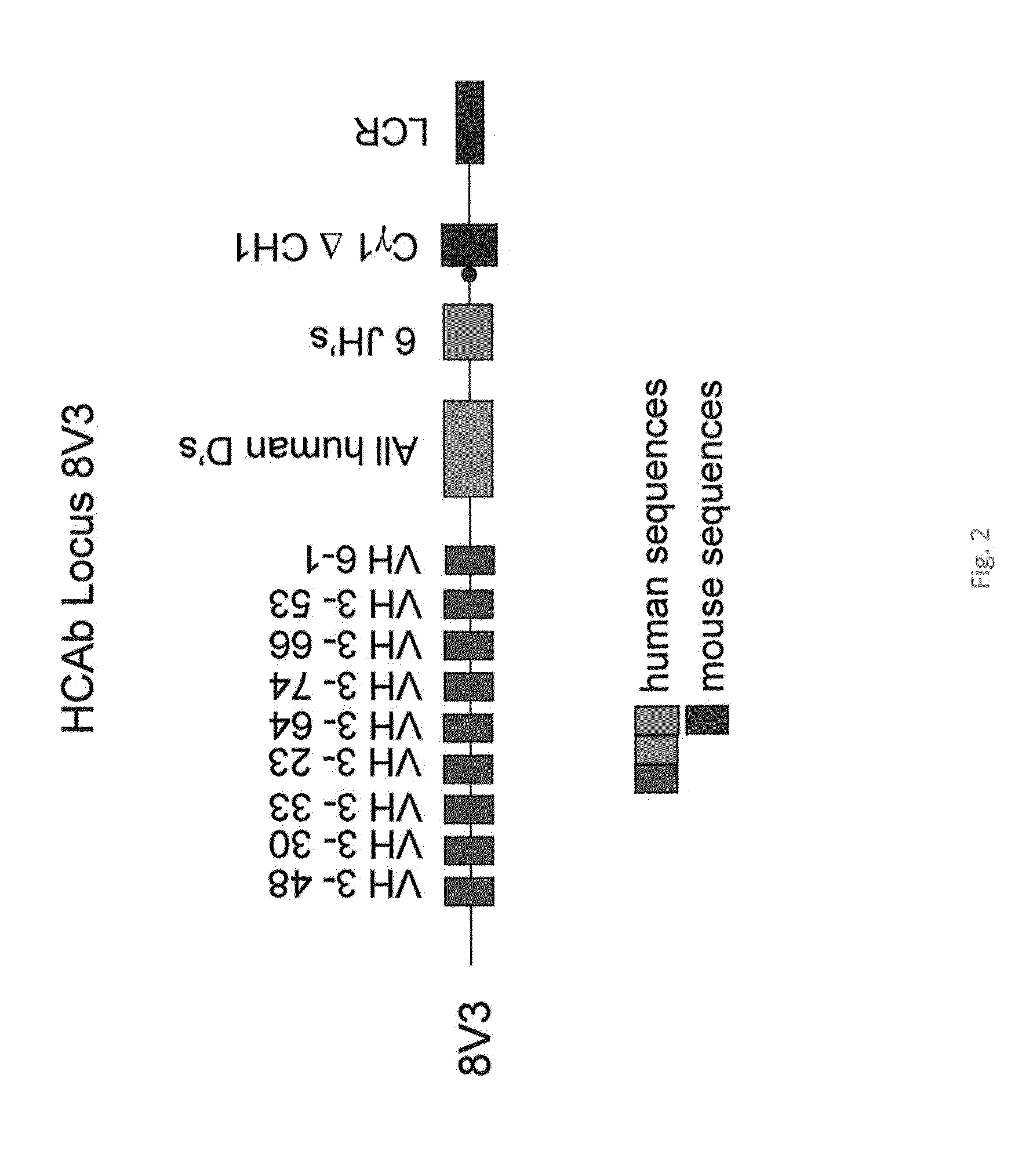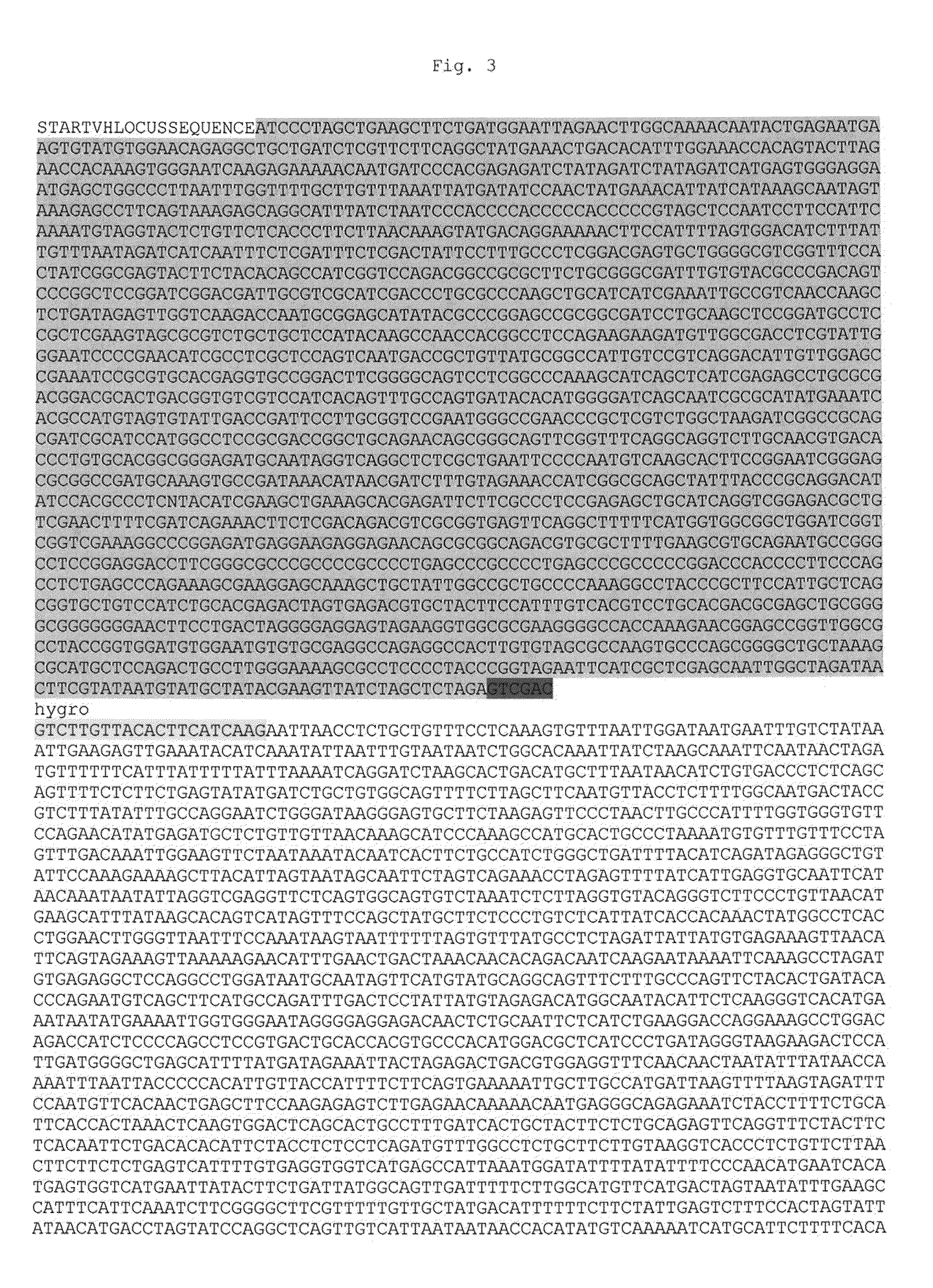Binding molecules
a technology of binding molecules and molecules, applied in the field of binding molecules, can solve the problems of not allowing the efficient generation of high affinity soluble heavy chain only antibodies, and achieve the effect of maximising diversity and maximizing efficiency
- Summary
- Abstract
- Description
- Claims
- Application Information
AI Technical Summary
Benefits of technology
Problems solved by technology
Method used
Image
Examples
example 1
[0126]In previous experiments, transgenic mice were prepared to express a heavy chain locus wherein 18 human VH segments were linked to 21 human heavy chain diversity (D) and all 6 joining (J) segments, followed by the Cγ1 (minus CH1) murine constant region gene and murine heavy chain immunoglobulin 3′ LCR (FIG. 1, designated “line 4”). The locus was also “repaired” by providing the additional D regions to obtain all 27 D regions in line sc27 (see example 2).
[0127]The transgene construct was introduced by breeding to mice where the heavy chain locus of the mouse was inactivated as discussed above, i.e., by the introduction of a stop codon in the mouse Cμ gene through homologous recombination and neomycin selection in ES cells. Similarly the mouse Ck locus was inactivated through the insertion of a short sequence that results causes out of frame reading containing novel stop codons. However this locus contains many VH segments that are intrinsically insoluble. Hence recombination wit...
example 2
8V3 Constructs
[0128]To overcome this problem, a transgenic HCAb locus was generated containing intrinsically more soluble VH segments and reducing the number of insoluble VH segments. The most and second most soluble class of VH segments are the VH3 and VH4 class, while the other classes are much less soluble. A locus was generated by removing almost all of the VH segments in the V18 locus discussed above using a unique restriction I-Sce1 site just 5′ of the VH6-1 (FIG. 1) leaving all of the D, J, C and LCR regions intact (BAC V18 decap). The V18 locus also lacked 6 of the DH regions which were not present on the original clone 1065 N8 containing human heavy chain D and J segments (BACPAC Recource Center, USA). The 6 missing DH segments were therefore isolated on one fragment using PCR amplification of human DNA and introduced into the BAC V18 decap at their normal position to restore the full complement of DH (27) segments in their normal order (V18decap-allD). This same procedure ...
example 3
Transgenic Mice, Breeding and Genotyping
[0130]The final BAC was introduced into transgenic mice by standard microinjection of fertilized eggs. Obviously, it could also be introduced via other technologies using ES cells or iPS cells. This could involve homologous recombination, TALE or ZnFinger technologies. These mice had an inactivated endogenous heavy chain locus and light chain □ locus (□MTE / □null) as described above. Similarly ES or iPS cells would have the endogenous Ig loci inactivated.
[0131]Transgenic loci were checked for integrity and number of copies by Southern blot and PCR analysis of tail DNA (Southern E M J. Mol. Biol. 1975 98: 503-517) using 5′ and 3′ end locus probes. Founders were bred as lines in the □MTE / □null background. Genotyping was done by standard PCR analysis using primers for each of the different regions of the locus.
PUM
 Login to View More
Login to View More Abstract
Description
Claims
Application Information
 Login to View More
Login to View More - R&D
- Intellectual Property
- Life Sciences
- Materials
- Tech Scout
- Unparalleled Data Quality
- Higher Quality Content
- 60% Fewer Hallucinations
Browse by: Latest US Patents, China's latest patents, Technical Efficacy Thesaurus, Application Domain, Technology Topic, Popular Technical Reports.
© 2025 PatSnap. All rights reserved.Legal|Privacy policy|Modern Slavery Act Transparency Statement|Sitemap|About US| Contact US: help@patsnap.com



